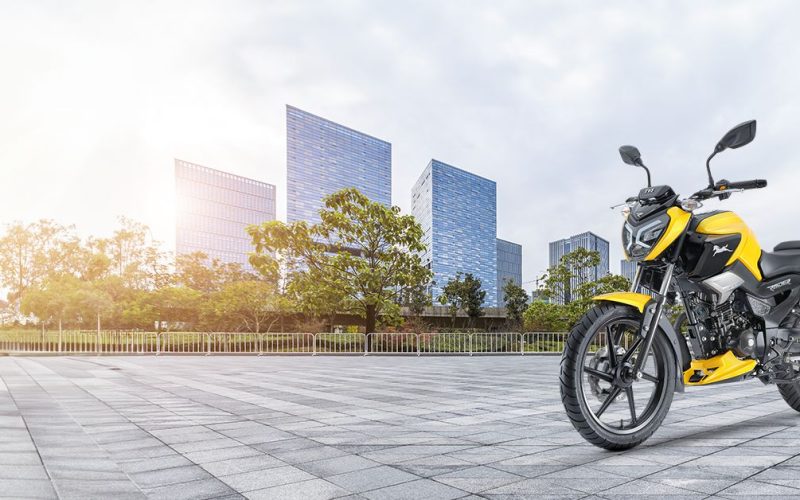Buying a motorcycle can be exciting, but there’s more to the process than picking out the perfect ride. One of the first financial decisions you’ll make is the size of your down payment. While some riders may be tempted to put down as little as possible, the right down payment can impact your loan terms, monthly payments, and long-term ownership experience.
In this blog, we’ll walk through how motorcycle down payments work, what’s typically recommended, and what you should consider when planning your purchase—whether you’re buying new or used.
Why Down Payments Matter
A down payment is the upfront amount you pay when financing a motorcycle. The rest is covered by a loan, which you’ll pay back over time with interest. Your down payment can affect several key parts of your purchase:
-
Loan approval: A larger down payment can increase your chance of being approved for financing.
-
Interest rates: Lenders often offer lower rates if you’re putting down more money upfront.
-
Monthly payments: The more you pay now, the less you owe later—resulting in smaller monthly payments.
-
Loan-to-value ratio (LTV): A good LTV helps you avoid owing more than the motorcycle is worth as it depreciates.
In short, a good down payment gives you better control over your loan, budget, and ownership experience.
What Is the Recommended Down Payment?
There’s no single answer for every buyer, but a common rule of thumb is to put down 10% to 20% of the motorcycle’s purchase price. Here’s a breakdown of what that could look like:
-
$8,000 bike = $800 to $1,600 down payment
-
$12,000 bike = $1,200 to $2,400 down payment
-
$20,000 touring model = $2,000 to $4,000 down payment
Putting down 10% is generally the minimum if you’re financing through a lender. That said, many financial advisors recommend going closer to 20%—especially if you’re looking to reduce your interest or get better loan terms.
How Credit Score Affects Your Down Payment
Your credit score plays a big role in how much you’ll be asked to put down. Here’s how it typically breaks down:
-
Excellent Credit (750 and up): You may qualify for 0% down, although it’s still smart to put money down to reduce your loan balance.
-
Good Credit (700–749): Lenders may require 10%, but better terms are often available with a higher down payment.
-
Fair Credit (650–699): Expect to put down 15% to 20% or more, with slightly higher interest rates.
-
Poor Credit (below 650): You might need to put down 25% or more and accept higher interest charges.
Even if a motorcycle shop offers low- or no-money-down promotions, lenders will still assess your creditworthiness before approving those terms.
Buying New vs. Used: How It Changes the Down Payment
Whether you’re buying new or used can also influence how much you should put down. Here’s how the two compare:
New Motorcycles
-
Higher depreciation in the first year
-
May offer promotional financing
-
Requires a larger down payment to reduce early depreciation risk
Used Motorcycles
-
Less depreciation than new models
-
Usually lower price point
-
Lenders may still require a higher down payment depending on the bike’s age
With a used motorcycle, you’re often working with lower overall prices, so your 10–20% down payment won’t be as large. Still, some lenders are stricter about financing used models, especially older bikes, so be prepared for a slightly higher percentage.
Cash vs. Financing
Before heading to a motorcycle shop, it’s helpful to decide if you’re paying in full or financing. A cash purchase removes the need for a down payment altogether, but it’s not the best choice for everyone.
Benefits of Paying Cash
-
No interest or financing fees
-
Immediate ownership
-
Simplified paperwork and process
Benefits of Financing
-
Preserve cash for other expenses
-
Build credit with on-time payments
-
Access to special dealer promotions or incentives
Even if you’re financing, putting down a significant amount of cash upfront gives you more favorable loan terms and reduces your long-term costs.
Hidden Costs to Plan For
The purchase price isn’t the only expense you’ll face. Budgeting for additional costs can help you decide how much cash you’re comfortable putting toward the down payment:
-
Taxes and registration: These can add hundreds of dollars depending on your state.
-
Dealer fees: Document and destination fees often appear in dealership purchases.
-
Gear and safety equipment: Helmet, gloves, jacket, and boots are essential.
-
Insurance: Rates vary by bike model, rider experience, and location.
-
Maintenance: Consider an initial inspection or service, especially on used bikes.
If you’re buying from a motorcycle shop, ask for a full out-the-door quote so you know what to expect. That way, you can better balance your down payment with the other startup costs of ownership.
How to Save for a Down Payment
Saving for a motorcycle down payment doesn’t have to be overwhelming. Here are a few tips to help you reach your goal faster:
-
Set a specific goal: Know the amount you want to save and by when.
-
Open a dedicated savings account: Keep it separate from your daily spending.
-
Automate your savings: Transfer a fixed amount from each paycheck.
-
Cut nonessential expenses: Temporarily reduce dining out, entertainment, or subscriptions.
-
Use windfalls or bonuses: Tax refunds and work bonuses can give you a big boost.
By planning ahead, you’ll be able to walk into the dealership with more negotiating power and a stronger financial position.
Final Thoughts
So, what is a good down payment on a motorcycle? For most buyers, aiming for 10% to 20% of the purchase price is a solid strategy. It helps you lower your loan amount, qualify for better financing, and manage your monthly payments more effectively.
Your credit score, budget, and long-term goals should all influence how much you decide to put down. A well-planned down payment not only makes buying a motorcycle easier but also sets you up for long-term success as a rider.
Before visiting a motorcycle shop, take time to review your finances, compare loan options, and think through your total cost of ownership. A little extra preparation now can save you money—and stress—down the road.

